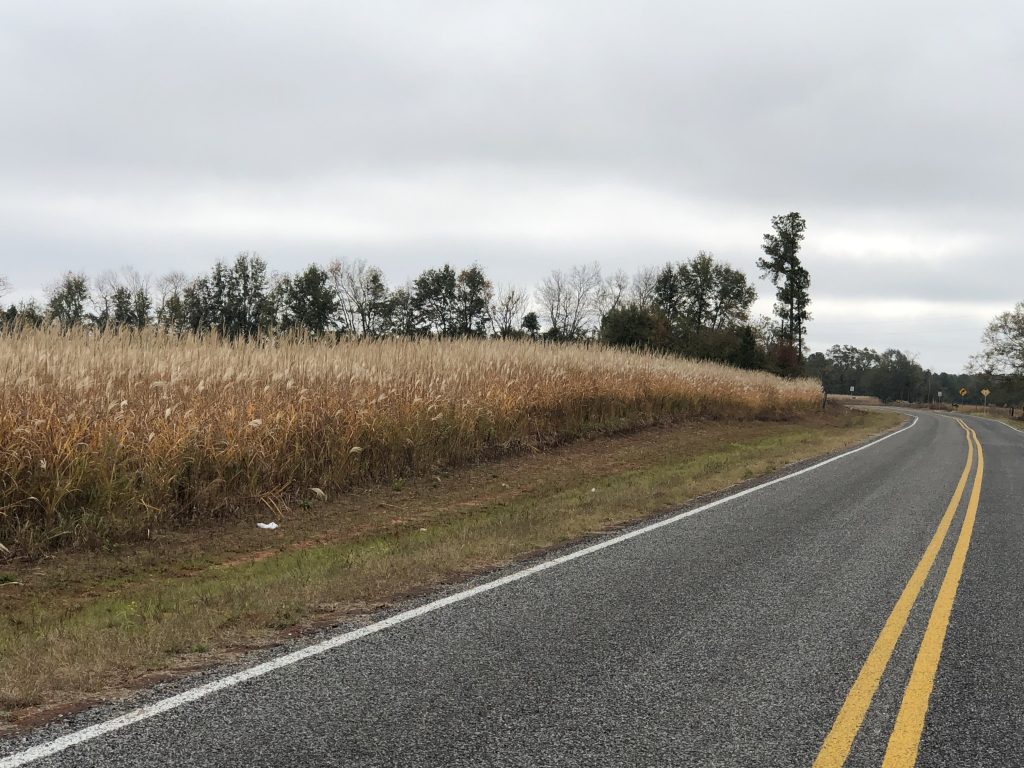
The Ultimate Plot Screen
Since Real World Wildlife Products released the news about their new patented miscanthus variety which will be available this spring, the internet has exploded with mis-information about miscanthus. With that said, let’s clear up some of the mis-information regarding Real Worlds new Giant Miscanthus. Then I am going to share new information on how you can create the ultimate plot screen.
Let’s start with the false idea that Real World Giant Miscanthus is an invasive plant that will spread and take over your property. Simply put, nothing could be further from the truth. Real World Giant Miscanthus is a patented variety of miscanthus giganteus. Miscanthus giganteus is a sterile hybrid cross of Miscanthus sinensis and Miscanthus sacchariflorus that does not produce seed. To propagate miscanthus giganteus one must plant pieces of root called rhizomes which have been harvested from a plant. There is no chance whatsoever that Real World Giant Miscanthus is going to spread on your property or beyond. In fact miscanthus giganteus is being grown in numerous university test plots around the country as new uses for this plant are being discovered.
One so-called habitat “expert” quickly put out a video downplaying miscanthus as an effective screen and suggested that switchgrass is a better option. Some valid points were made in the video but it also contained plenty of exaggerations, false claims and a sales pitch for an annual screen product sold by the company that sponsors him. We take it as a compliment that others follow Real World so closely and react to our every move but in time false information will cost those spreading it their credibility. Remember, Real World has spent several years testing annual species for screening and NONE of them even came close to performing to a level that would allow them to wear the Real World label! Annual screening products not only break over every fall and fail to do the job they are promoted to do, they also require seed to be purchased every year as well as the time and labor needed to plant them each spring.
So let’s quickly look at switchgrass for screening as was suggested in the above referenced video. In some cases switchgrass can certainly be an effective screen. A lot depends on the lay of the land at the specific site where the screen is needed. If a 6’-7’ screen will do the job then switchgrass can do the trick … provided it is the right switchgrass! Real World switchgrass is taller and stands better than any other switchgrass we have been able to find and test it against so if you are looking at a screen using switchgrass, Real World variety switchgrass is certainly the best option. This probably sounds like a sales pitch and I understand many folks skepticism given all the conflicting information available but consider this; over the past several years as folks have tried Real World switchgrass and saw the results on their own properties, sales have exploded. In fact last year Real World sold out of their switchgrass within the first few weeks of the year.
So let’s take a look at establishing what I consider the ultimate screening option – a combination of Real World Giant Miscanthus and Real World switchgrass. Start by preparing a strip that is 10’-12’ wide where you want your screen by killing all vegetation with a herbicide such as glyphosate while also mixing in atrazine for residual weed control. Once the vegetation has been killed, work the soil with a disk or tiller to loosen it and promote root growth in the new grass seedlings. Plant a row of Real World Giant Miscanthus rhizomes spaced 18” apart right down the middle of the strip of worked soil. Then plant an additional row of Real World Giant Miscanthus rhizomes on each side of the first row giving you three total rows of miscanthus spaced 2-3’ apart. Once the miscanthus rhizomes have been planted, then broadcast Real World switchgrass over the entire area at a rate of 4# per acre.
In about three years when the miscanthus and switchgrass have reached full maturity you will have the ultimate screen. The strong miscanthus stalks will reach 12’-15’ high and help support the switchgrass growing around it. I should note that weed control is important for the establishment of both miscanthus and switchgrass. If weeds become an issue, spray the strip with 2-4D which will not harm either the miscanthus or the switchgrass. There you have it; the ultimate screening option. If someone tries to discredit this idea take a close look at their possible connection to a seed company still promoting the idea that an annual screen is a better idea.